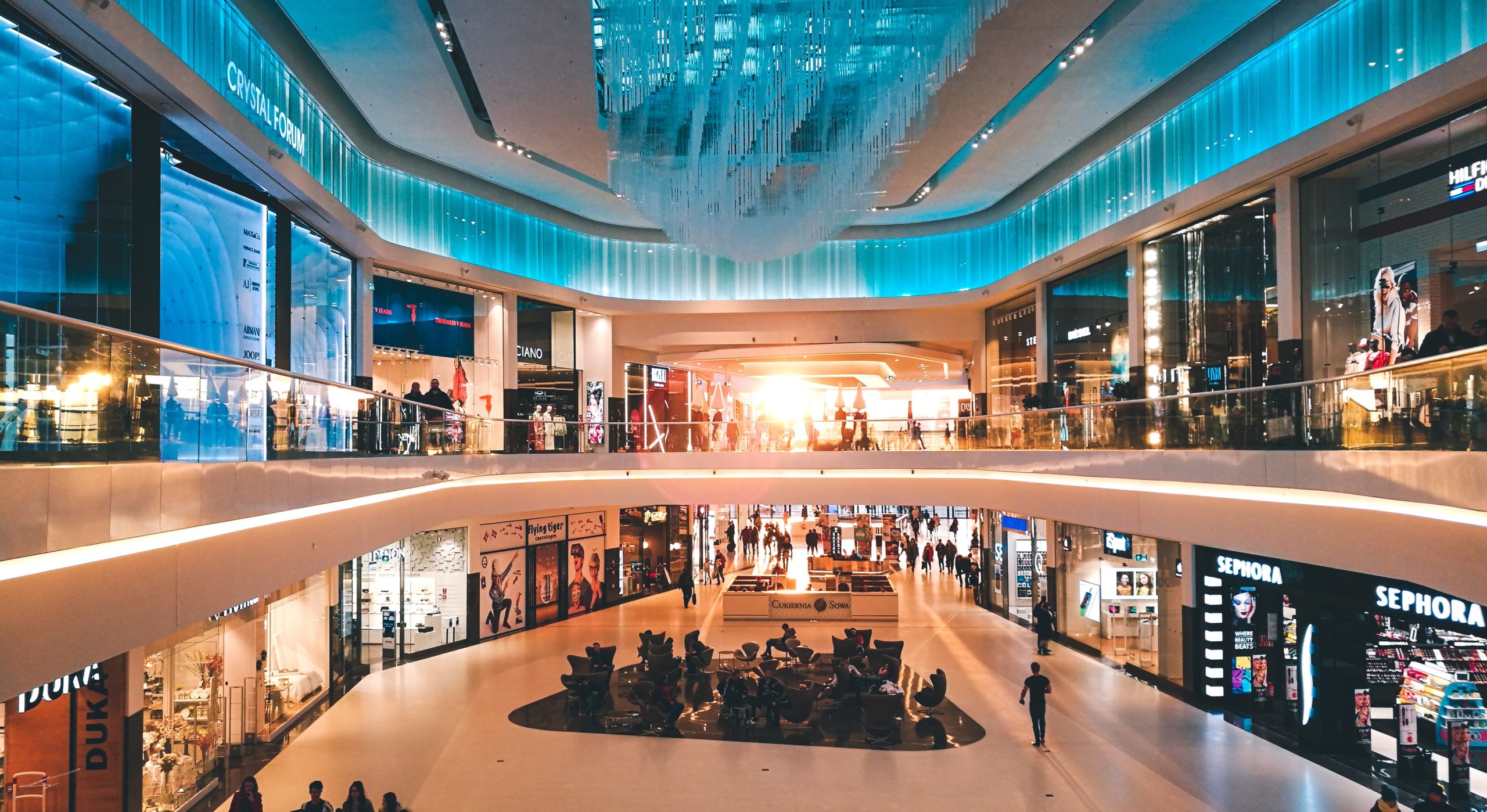Everyone is saying that the pandemic will be the death of retail. I don’t see it this way, but I think the pandemic will accelerate change and reshape the way customers do retail, both physically and digitally. Organizations that recognize and anticipate this shift will benefit most from the pandemic-inspired modifications in customer behavior.
 For example, I bought a sixty-five-inch television a little while ago. I researched a fair amount of detail online, from discovering the brands’ differences in screen quality and other information. Then, I went into local stores and looked at the one I wanted to buy to ensure it met my expectations. By contrast, three weeks before this larger TV purchase, I purchased a twenty-four-inch television online to go in the kitchen. So, click, click, click, and Amazon delivered the TV the next day. These contrasting experiences summarize what’s happening in the retail sector.
For example, I bought a sixty-five-inch television a little while ago. I researched a fair amount of detail online, from discovering the brands’ differences in screen quality and other information. Then, I went into local stores and looked at the one I wanted to buy to ensure it met my expectations. By contrast, three weeks before this larger TV purchase, I purchased a twenty-four-inch television online to go in the kitchen. So, click, click, click, and Amazon delivered the TV the next day. These contrasting experiences summarize what’s happening in the retail sector.
I have two lists we shared from a recent podcast about the future of retail. The first is theoretical explanations for how customers decide on retail experiences and how the decision process and behavior will change when shifting from physical to digital purchasing. The second is an exploration of how the various buying circumstances affect customers’ behavior. Hopefully, if you put these things together, the lists will be informative and instructional.
Four Behavioral Science Theoretical Concepts That Influence Retail Experiences
Four different theoretical areas underlay the changes in how customers behave that are going on in retail now. As we move from physical to digital retail experience, we anticipate the following changes in influencing customer behavior.
- The desire for haptics. Haptics is the feedback that uses touch to communicate with customers. We like haptics because people want to touch things; we find it informative. For example, you might think that you do not like something, but when you touch it, the product’s feel changes your perception of it. There was a famous anecdote a couple of years ago about the popular brand of Beats headphones. Somebody took one apart and found pieces of metal inside that didn’t do anything except make the headphones feel heavier. When you held them, the headphone’s weight informed you that the headphones were of higher quality. However, you can’t touch and feel products online. As we move from a physical shopping environment to an online shopping environment, it limits the number of inputs we can use to make our decision. A shift to substitute some of the information gained from touch will serve companies well that want to sell products online, whether that means close-ups or videos, or even Haptic Feedback through the user interface.
- Embodied Cognition. Our brains develop in concert with our bodies, so we use bodily stimuli to inform our thinking. For example, research shows that people tend to prefer romantic movies more than other genres when it’s cold outside. Feeling cold activates our need to feel warm, and we connect romantic warmth as a way to meet that need. Other research shows that you evaluate other people as having higher levels of warmth and friendliness when you’re holding something warm in your hands. When you’re holding something heavy, things feel more serious to you. Embodied Cognition would be another way that moving out of a physical retail environment and into an online retail environment could affect how people make evaluations and choices.
- Social Shopping. Research shows the context of other people affects how we make decisions. For example, when men are shopping with other men, their choices tend to become more extreme. When women are shopping with other women, their purchases tend to become more middle of the road. When we shop with people we know, it can influence us to act one way, and when shopping with people we don’t know, that also changes what we do. Sometimes people will not buy embarrassing products in a crowded environment because they fear judgment. However, all of that context changes when we are shopping online rather than in public.
- Non-planned impulse purchases. Impulse purchases occurring in a physical store environment are things that we encounter. We walk by, see it, grab it, throw it in the shopping cart, and repeat. While impulse shopping does happen online, the volume of new things that we can run into and throw into the cart is far fewer than what we would encounter in a physical setting, like a department store. Moreover, the products we find online, as proposed, unplanned purchases will be more deliberate, targeted, and related to what we are shopping for online in that instant. One way that impulse shopping might increase as we shop more online is by filling immediate desires. In the past, we might have seen an ad for something we wanted and then have to remember (which might or might not happen) to grab it at the store next time. However, if I can buy it right now on my phone, I am more likely to complete that impulse buy. For me, I shop a lot more impulsively online for that reason. My wife Lorraine complains that something is arriving at the front door every day of the week. But, for me, it’s easier to get the item now than add it to a list, even though the effort of making a list is no more or less than clicking on it and buying it.
Why Customers Choose One Buying Experience Over the Other
Each of those four theoretical ideas manifests itself in customer behavior. Moreover, we all know customers are buying more things through a digital experience during the COVID-19 pandemic. However, my example of the difference between buying a sixty-five-inch TV and twenty-four-inch TV shows varying circumstances for when they will and when they won’t. A quick analysis also reveals some truths about the future of physical retail and where its strengths lie.

- There’s a reasonably well-worn process. In both a physical and online retail experience, you’re exploring by wandering around the offers deciding what you should get. I break this process down into four steps: exploring, evaluating, defining, and purchasing. Before the Internet, we did that all physically, but now they can be a mixture of online and physical.
- The decision’s perceived importance drives customers to physical experiences. In my TV example, my process for twenty-four-inch TV was entirely online because I didn’t consider it a necessary purchase. However, I thought the sixty-five-inch TV was an important one, so that process was a mixture of online and physical retail experiences. There are other things I would want to see in person, too, like a refrigerator, car, or even a birthday present for someone else. You want to build your confidence that you are making the correct and sufficiently informed decision by interacting with the product in person. In other words, because I feel it’s an important purchase, being sufficiently informed means touching, handling, and seeing what the purchase looks and feels like in person. However, I can buy commodities like batteries, yogurts, or toilet rolls online.
- Experiential Shopping isn’t always about the thing you buy. I go to a farmer’s market in Sarasota for food shopping, but I’m not going there for the food. Seventy-five percent of the reason I am there is because I enjoy walking around the booths and then sitting down to have a cup of coffee. Yeah, we’re buying potatoes, leeks, and other wonderful things, but it’s more the experience. Some of the allure of physical retail is the experience you have there. I like to go to Apple to buy things because there is a social part of it. I like talking to other Apple Geeks and looking at the other products Apple has there on display. Luxury brands understand this concept, too. They know that being present in the store with their brand is part of the overall appeal and, as a result, elevate that physical experience to meet those expectations. I refer to this type of physical experience as Tribal Shopping.
- Some things you have to see. Sometimes customers need to see and hold products to decide to buy them. For example, when I am buying food for a dinner party (remember those?), I need to see the fruits and cheeses. I need to see (and smell) the fish in person. I’ve bought things on Amazon, opened the box, and thought, “oh, that’s small. I didn’t expect it to be that small!” No matter how many ways the sellers tell you the product size, it’s still difficult to gauge online, and sometimes it is a disappointment.
So, What Should You Do About Your Retail Experiences?
If you keep all of these things in mind from these two lists, you can plan around them and adapt to customer behavior changes for both types of experiences. Consider the theoretical and how that plays out in your experience. Determine whether your customers are there for the shopping experience or more information. Are there ways that you could make online Shopping more social for your customers? Are there ways to simulate haptics better with high-res, close up pictures of the texture of the product or videos of it? While that’s not the same as haptics, it’s closer, and it gives people more information than they might have had.
Branding is crucial in this effort also. You trust some brands more than you trust others. Suppose you have done a proper job maintaining your brand promise and consistently delivering on customers’ expectations. In that case, you will have more success getting customers to decide to buy online even without physical interaction. Moreover, you need to ensure that your experience is living up to the brand, which can be difficult to do from the inside of an organization. Sometimes an outside perspective can provide insight that can slip by someone too close to the problem. We have had a lot more clients come to us for what we call an Experience Health Check, both for physical and digital experiences. We act as if we are customers to assess what is working in their experience and then provide suggestions for what isn’t.
You can also adapt your experiences to accommodate for the drawbacks of the respective channel. Warby Parker has been selling glasses online now for several years. They have the technology to input a picture of your face so you can zoom around and see in simulation what the glasses will look like on you. However, a significant part of Warby Parker’s experience is that they mail four or five frames so that you can physically try them on with the expectation that you will send all but one back. Warby Parker recognized early that as adaptable as the technology is, a large customer group exists who are not comfortable buying glasses without trying them on first. So, they built that into their business model.
Also, I would encourage some retailers to think of their physical locations as showrooms instead of where people buy things. Apple dropped the name “store” from the retail experience and made it more of a club. Think about how you can build that social interaction, that tribe. What is the real reason that people would come here? And if they won’t, then fine, save the rent money, keep all the cost of employing people there and instead do an excellent job selling stuff online.
The whole retail area is changing, but I don’t think retail is going away. So, if you sell through retailers or are a retailer yourself, you should determine what your customers are gaining and losing across these various platforms. Customers do not think of these two venues as equivalent but instead consider each of them better for certain things in specific situations. Your job is to accept these facts, adapt to the changing environment, and, perhaps most importantly, ensure that customers think your retail venues are better than the competition.
To hear more about this idea in more detail, listen to the complete podcast here.
Colin Shaw is the founder and CEO of Beyond Philosophy, one of the world’s leading Customer experience consultancy & training organizations. Colin is an international author of six bestselling books and an engaging keynote speaker.
Follow Colin Shaw on Twitter @ColinShaw_CX


